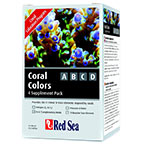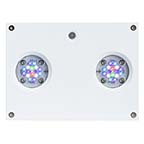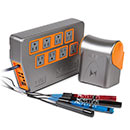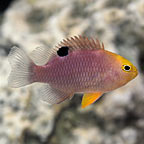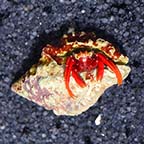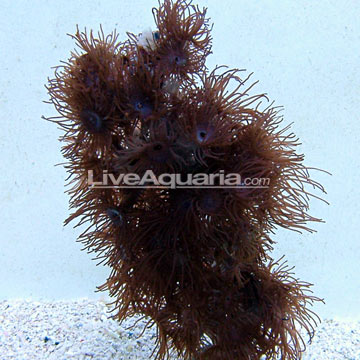
Additional locales and sizes may be available!
Additional locales and sizes may be available! Email me when availableQuick Stats
What do these Quick Stats mean? Click here for more information
What do these Quick Stats mean? Click here for more information
Overview
Acrozoanthus Stick Polyps are colonial animals with multiple tan or brown individual polyps attached to the discarded or dead tubes of tubeworms or fanworms. The colony is also referred to as Encrusting Stick Anemones, or Tree Polyps. The polyps have long tentacles and the ability to sting other polyps or corals, although the sting is not strong.
Stick/Tree Polyps are semi-aggressive and need space between their own colony and other corals. They require a high light level combined with a medium water movement within the aquarium. For continued good health, they also require the addition of iodine and other trace elements to the water.
They will reproduce in the reef aquarium on their own by budding (splitting off a portion of their base or mouth), if adequate water quality parameters are maintained.
The symbiotic algae zooxanthellae hosted within their bodies provide the majority of their nutritional requirements through photosynthesis. The remainder of their nutritional requirements will need to be provided in the form of regular weekly feedings of micro-plankton or brine shrimp.
Approximate Purchase Size: 3" to 5"





